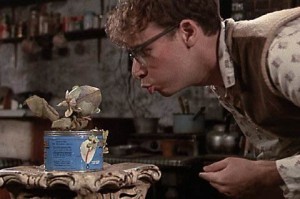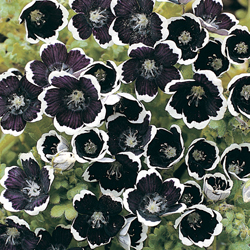
What plantophile hasn’t, at one point or another, hummed to their plants, or perhaps imagined a small face in the center of a pansie? And poets, since time immemorial have waxed about the amazing beauty and cunning of the natural world. We plant lovers “plantopomorphize” our favorite green companions by naming them (I once had a Purple Velvet plant named Nico). And who doesn’t remember that 6th grade science fair project that proves plants thrive when listening to classical music? Alice’s garden of flowers is a prime example of an imagined “language” and personality of individual plants. And of course there is the Secret Life of Plants, the book that claimed that plants have brains. And feelings.
Scientists sometimes (still)chagrin this book, because its authors Christopher Bird and Peter Tompkins, made radical claims (radical at least in 1973) such as the idea that plants have emotions and that actually originate in a “supramaterial world of cosmic beings [such as] fairies, elves, gnomes, sylphs, and host of other creatures, were a matter of direct vision and experience to clairvoyants among the Celts and other sensitives.”
The popular books based in the Findhorn community of Scotland, including the seminal work by Paul Hawken (of Smith and Hawken fame) The Magic of Findhorn (1975), give cred to the idea that something else is in control when plants are involved. The book, which features a skeptic (Hawken) joining the community for a year and witnessing incredible gardening feats, says this on its first edition jacket (thanks, Mom!):
There have been stories in the press and other media about a small community in the north of Scotland called Findhorn where people talk to plants with amazing results—stories of vegetable and flower gardens animated by angelic forms where Pan’s pipes are heard in the winds—stories of plants performing incredible feats of growth and endurance: 40-pound cabbages, 8-foot delphiniums, and roses blooming in the snow.
Modern botanists, in their own way, are extending the idea that plants have brains. According to an article in Natural History from May of 2012, the first international plant neurobiology meeting was held in 2005 in Florence, Italy (can I get on that invite list?) Their website defines plant neurobiology (what I like to call neurobotany) as ” a newly named, but also old and fascinating field in plant biology addressing the physiological basis of adaptive behavior in plants. Perhaps this field could be called ‘Sensory Biology in Plants.'”
The Natural History article outlined three reasons for plants having nervous systems:
- Plants have genes similar to those that specify components of animal nervous systems, specifically proteins that have been show to have distinct roles in neural function.
- While said proteins are likely to not have “neural” functions in plants, they are believed to behave in ways very similar to neural molecules.
- Some plants show synapse-like regions between the cells, where neurotransmitter molecules facilitate cell-to-cell communication.
Say what, you crazy rotanist??? Basically, plants have their own “version” of nervous system. And if you want some more scientific proof for what Bird, Tompkins, Hawkens (and before them even Darwin had a similar theory) are saying about plants having “feelings” a recent study with peas might give a little more validation. Peas, when stressed from drought, close their “pores” (known in botany as stomata.) The study showed that a non-stressed, well watered pea plant whose rooted near by a stressed plant will also close its stomata as a precaution. Yes, it gets the vibes of stress!
Of course this is all basically scientific evidence of what shamans and plant magic workers have been saying since we had teeth.
So maybe there is a real-life Audrey II out there, waiting to get its “jaws” on us. One that thinks, feels, longs, yearns…a rotanist can hope!




















